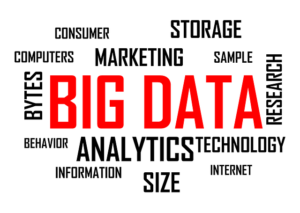 We are constantly generating data that needs to be channeled and analyzed. Thanks to Big Data, these data are transformed into useful information for companies, various sectors, and activities. Artificial Intelligence gives machines prominence through the implementation of robots and intelligent machines present in very varied fields such as engineering, medicine, economics, and even some companies.
We are constantly generating data that needs to be channeled and analyzed. Thanks to Big Data, these data are transformed into useful information for companies, various sectors, and activities. Artificial Intelligence gives machines prominence through the implementation of robots and intelligent machines present in very varied fields such as engineering, medicine, economics, and even some companies.
With AI, human intelligence has been partially replicated in machines, helping to streamline tasks and procedures, which saves time and cost for companies that implement it in their functions. The primary basis of this type of intelligence is data; it nourishes it and uses it to develop algorithms, obtain information from the environment, and interact with it.
How do Big Data and Artificial Intelligence complement each other?
In the current panorama, no company has begun to implement Big Data and Artificial Intelligence in its business strategy. AI technological solutions provide new ways to interact with the world around us, providing new knowledge and experiences for companies. Artificial Intelligence allows us to analyze, process, and select data in a more efficient and precise way.
Patterns and trends can be found in social media data, finances, or geographic data. Companies can use this data to determine the probability that someone will buy a product; they just need to look at social networks and compare them with the information available through Big Data.
Data is what keeps artificial intelligence going. It, in turn, collects information while searching for patterns, which is added to databases full of information: Big Data. Both support each other to create a powerful data analysis machine.
Types Of Big Data
 Big data is crucial because of its untapped potential. Still, recent technology, such as visual analytics, is finally enabling businesses to uncover critical, even surprising, insights that give us more precise insight into human processes and behaviors. Sometimes, these processes and behaviors must be refined for the good of the business and its future success. Recognizing that no organization is precisely the same, technology providers investing at the forefront of << Big Data >> (whether creating partnerships in the data ecosystem or developing capabilities that improve data access and connectivity) are those that must be observed and adopted.
Big data is crucial because of its untapped potential. Still, recent technology, such as visual analytics, is finally enabling businesses to uncover critical, even surprising, insights that give us more precise insight into human processes and behaviors. Sometimes, these processes and behaviors must be refined for the good of the business and its future success. Recognizing that no organization is precisely the same, technology providers investing at the forefront of << Big Data >> (whether creating partnerships in the data ecosystem or developing capabilities that improve data access and connectivity) are those that must be observed and adopted.
Structured Data
Structured data is carefully organized data that is stored in databases, data sets, and spreadsheets. It is easy for traditional analysis tools to read this data.
Organizing unstructured data into structured data is time-consuming, but it is possible with the right solution. It involves data cataloging, data mapping, and data transformation.
Unstructured Data
Unstructured data, or raw data, is growing faster than structured data. Platforms like Facebook generate hundreds of terabytes of information a day. Unstructured data can also include data from customer surveys, notes, and emails. As unstructured data grows, big data technologies that can seamlessly analyze it will be crucial for businesses.
Semi-Structured Data
Semi-structured data has some organizational structure, but it is challenging to analyze as it is. With a little organization or cleanup, semi-structured data could be imported into a relational database just like structured data.
Semi-structured and structured data can be analyzed and visualized.
…

 Big data is essential because its analysis unlocks information and insights that go beyond human perception and the capabilities of traditional database analysis.
Big data is essential because its analysis unlocks information and insights that go beyond human perception and the capabilities of traditional database analysis. Spatial analysis and public safety
Spatial analysis and public safety